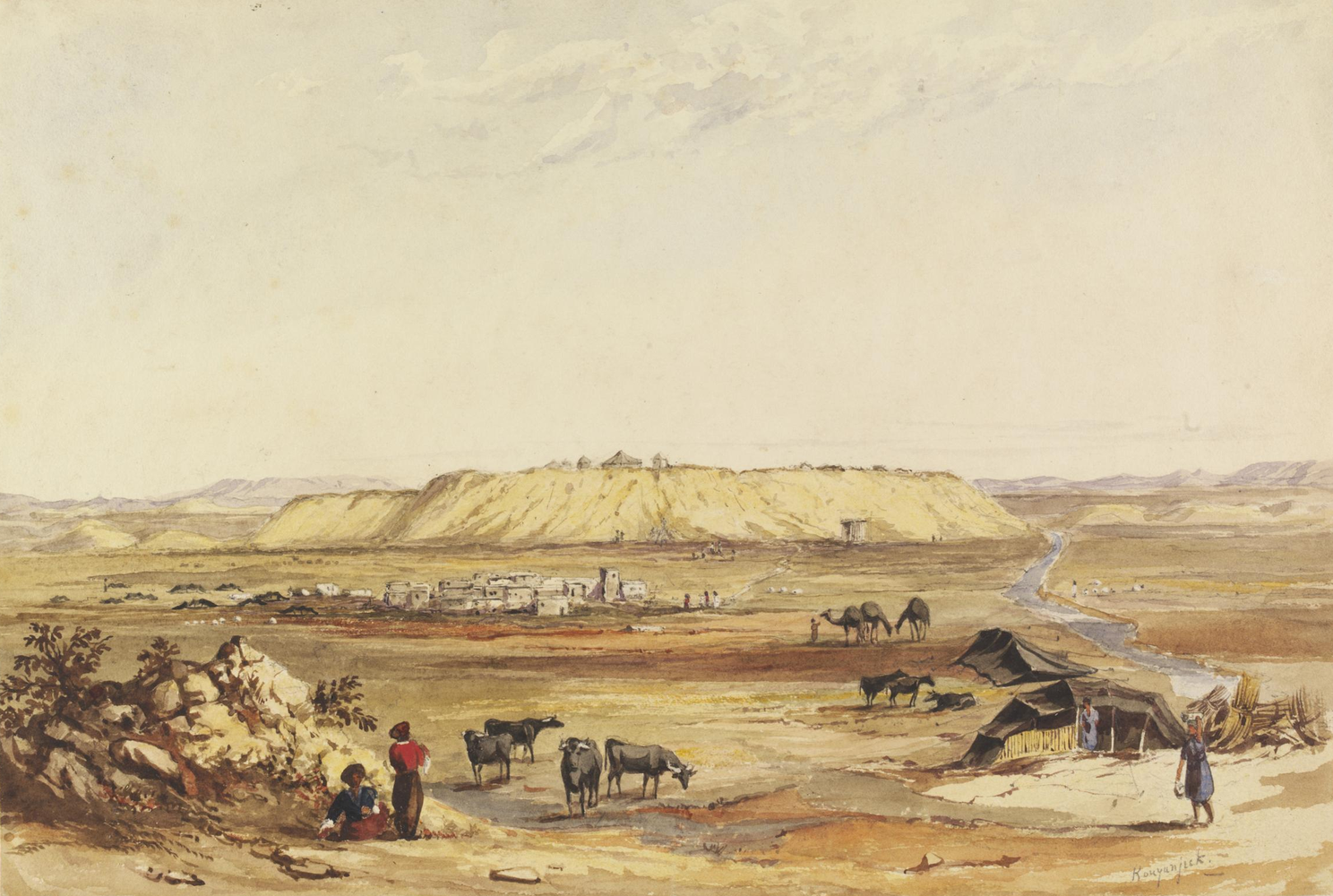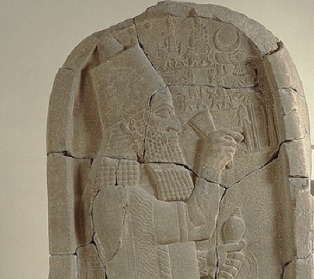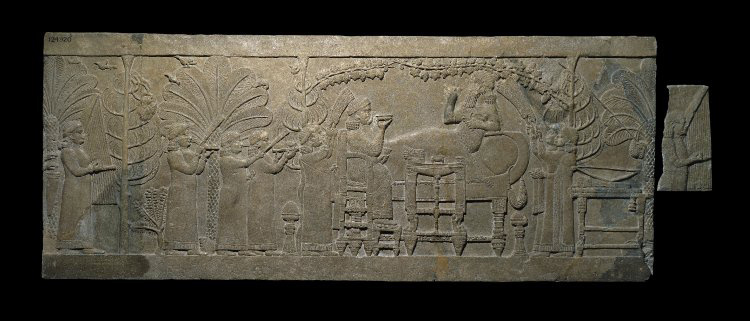Nineveh
Nineveh is on the left bank of the Tigris, in Iraq, in the suburbs of the city of Mosul. From the reign of Sennacherib, it was the last capital of Assyria. At the height of its power, in the 7th century BCE, it had two tells and covered 775 hectares. It was protected by a 12-kilometre-long rampart. Little is known about the lower city, at the foot of the tells, but a palace attributed to King Esarhaddon has been identified there.

Kuyunjik: the original site of Nineveh
To the north, tell Kuyunjik is more than 30 metres high and covers an area of approximately 45 hectares. This is the oldest occupied area of the site, dating back to the 7th millennium BCE. Archaeologists have excavated the remains of two Assyrian temples, one dedicated to Nabu, god of scribes, and the other to Ishtar, goddess of love and war. Two palaces have also been discovered: the Southwest Palace was built by Sennacherib (704-681 BCE) and the North Palace by his grandson, Ashurbanipal (668-630/627 BCE). Low-reliefs of a very high technical quality have been found in both palaces. Several thousand cuneiform tablets were also discovered, mostly from the library of Ashurbanipal.
Nebi Yunus: palace and arsenal of the kings
A more modest tell, Nebi Yunus, covering an area of approximately 15 hectares lay to the south. It straddled the rampart and contained the arsenal rebuilt by Sennacherib to train war horses and store tribute from campaigns. The son of Sennacherib, Esarhaddon (680-669 BCE) expanded the complex. The arsenal palace was elaborately decorated with glazed bricks, low-reliefs and several human-headed bulls, some of which are unfinished.
The gardens of Nineveh
Nineveh had several gardens scattered across the city. They were supplied with water by a sophisticated system of canals, one of which diverted water from a small river, the Gomel ‒ part of the basin of the Great Zab. These gardens may have been at the origin of the myth of the hanging gardens of Babylon and classical authors may have confused the Tigris and the Euphrates, Nineveh and Babylon, Sennacherib, King of Assyria and Nebuchadnezzar II (604-562 BCE), King of Babylon.





